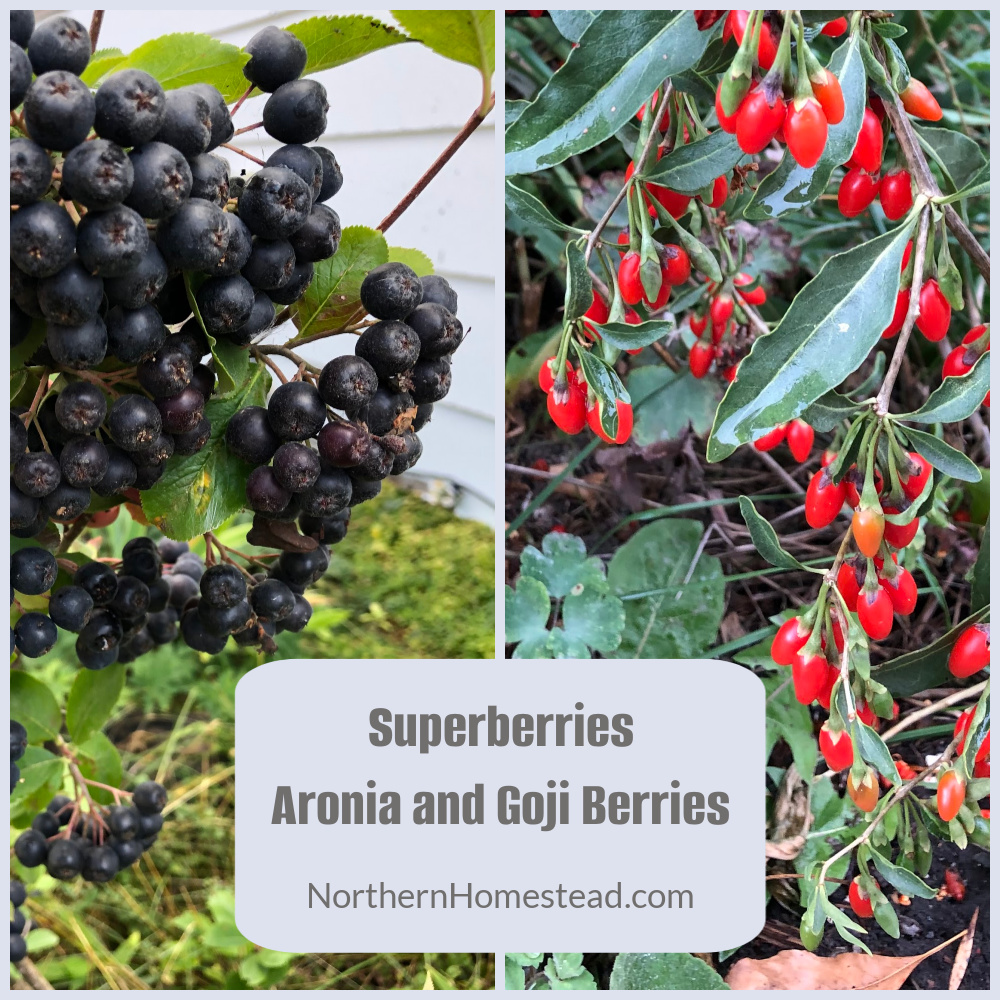
Growing berries in an urban cold-climate garden is a great idea, we have grown many of them. When it comes to the antioxidant scale, two stand out as superberries, scoring up to 10 times higher than the rest of the delicious berries that can be grown. These two are Aronia and Goji Berries. If space is limited, you might want to know which super berries to grow in an urban garden: Aronia or Goji Berries. We tried both, and here is our take on that question.
Our last article mentioned that we now focus on scaling down rather than scaling up in our urban garden. Based on our experience, we have determined what is worth planting. Some growers with limited space may consider superberries not worth growing because they might not be the most delicious snack, even though they are highly beneficial. However, both aronia and goji berries are visually attractive plants, and on top of that, they are considered superfoods. It might be worthwhile to consider planting at least one of them.
We are sharing our experience here because we find contradicting information online. We look at each one from a growing, harvesting, and using perspective.
Aronia berries
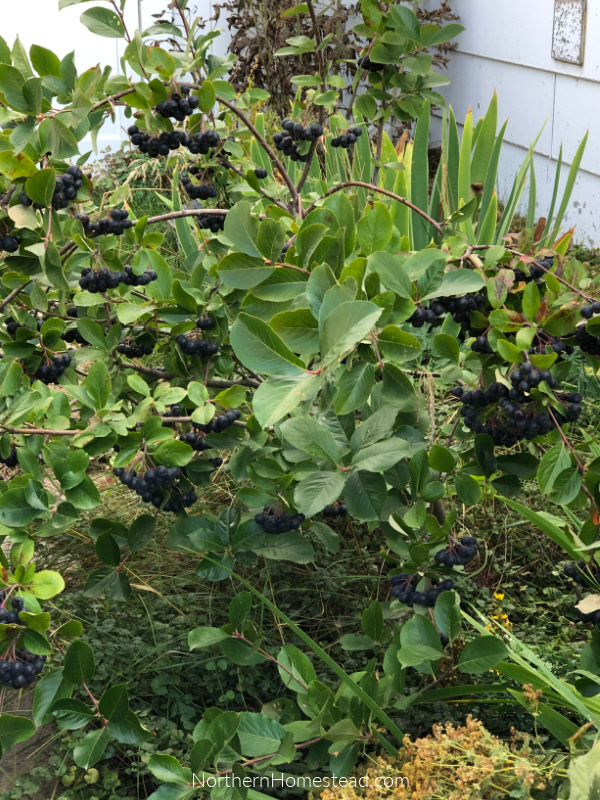
Aronia berries (Aronia melanocarpe), also known as chokeberry, are native to North America and Canada. They are hardy to Zone 3a and have not had any winter kill in our experience. We grow the Viking Aronia from T&T Seeds.
It’s a showy bush reaching about 5-6 feet; ours is still much smaller. White clusters of flowers are in spring, followed by dark berries in late summer, and the season finishes with beautiful fall colors.
In our experience, we have not seen it suckering yet, but I would not mind getting another bush or two.
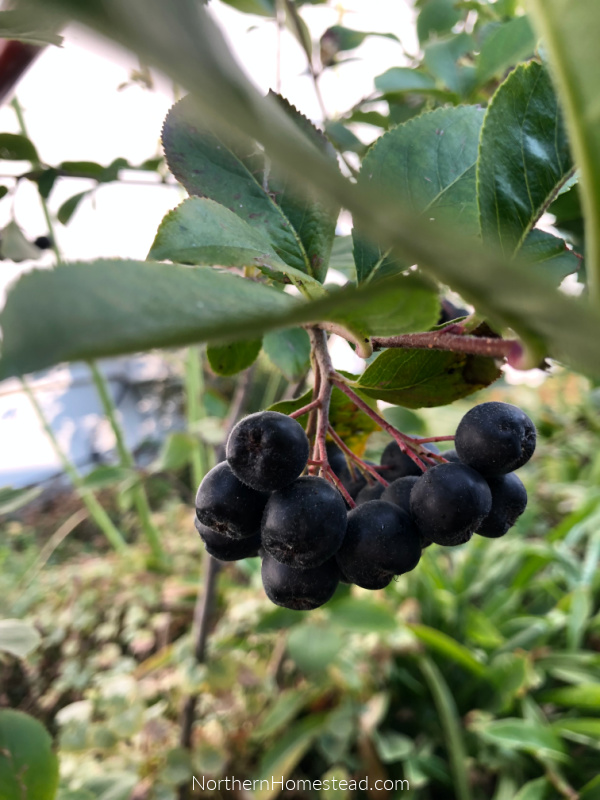
The berries’ taste is tart, with some sweetness, and I still enjoy snacking on them. They are also great in backing and other preserves. In other words, I don’t feel like it is just a superfood with no taste value, but of course, being a super berry, it is not as tasty as other cultivars grown for taste.
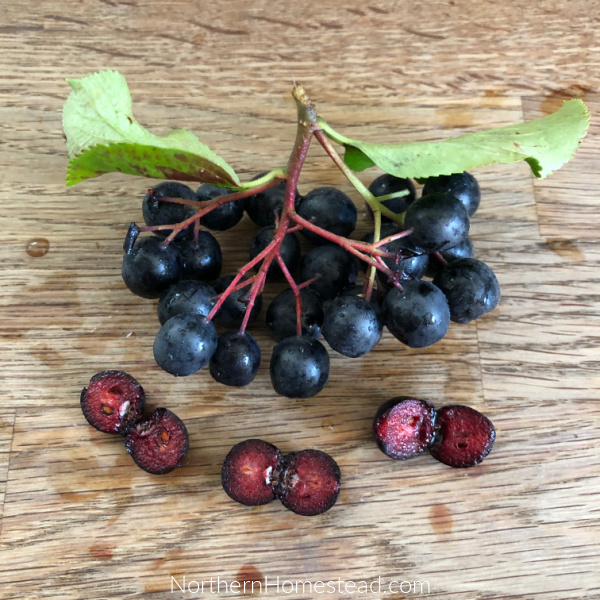 The berry is ready to harvest when it has turned dark on the outside and red on the inside. The stem also becomes reddish. Once the fruit begins to loosen from the stem, it is easy to pick.
The berry is ready to harvest when it has turned dark on the outside and red on the inside. The stem also becomes reddish. Once the fruit begins to loosen from the stem, it is easy to pick.
You can cut clusters or take a whole cluster into a hand and pick all the berries. When the berries are ripe, that works great.
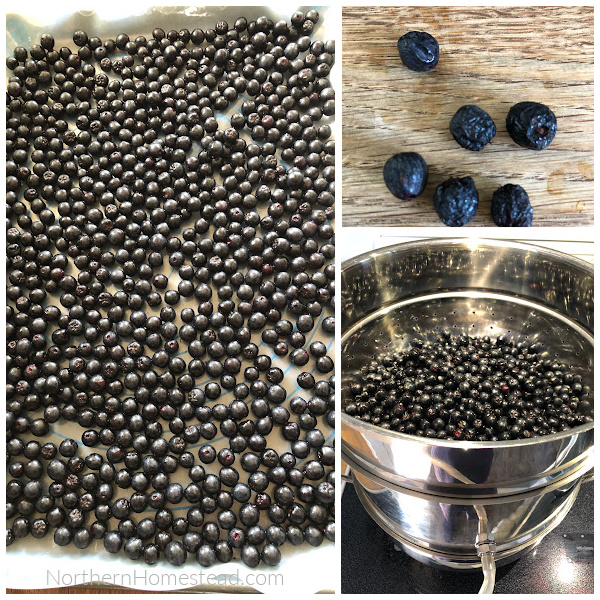 Aronia berries can be preserved by freezing, dehydrating, juicing, or making a tart jam.
Aronia berries can be preserved by freezing, dehydrating, juicing, or making a tart jam.
In conclusion, I am happy that we tried growing it, and the Aronia berry is here to stay in our garden.
Goji berries
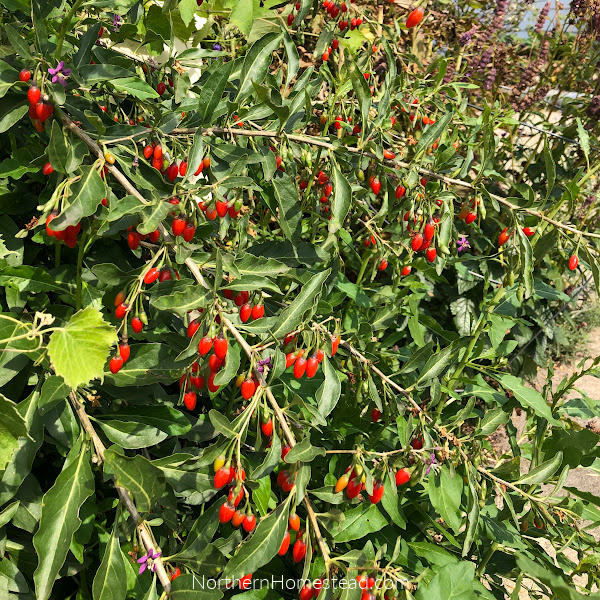 Goji berries or Wolfberry (Lydium) are known and praised for their vitamins and minerals. I was excited to plant them in our garden. Again, our plant came from T&T Seeds.
Goji berries or Wolfberry (Lydium) are known and praised for their vitamins and minerals. I was excited to plant them in our garden. Again, our plant came from T&T Seeds.
The seedlings struggled to take off, but now they are unstoppable. Contrary to what some suppliers say, we have found goji berries to be highly suckering, and I would even say invasive.
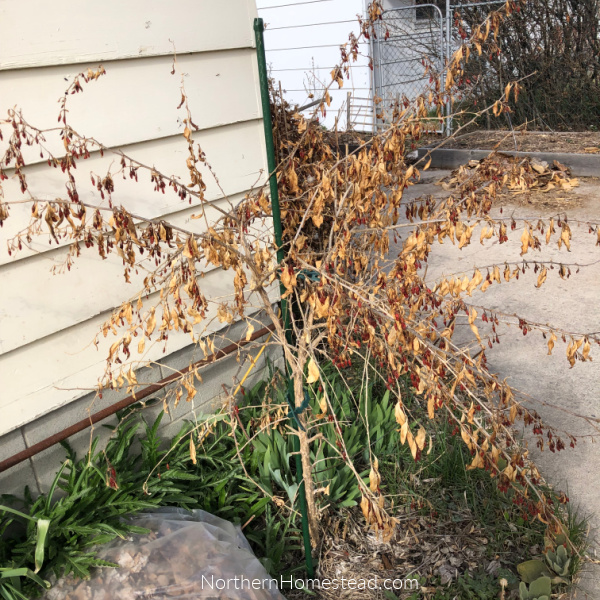 Our attractive shrub also did not make it through the winter, but the roots survived and are giving out tons of new shoots. However, there is no fruit on that new growth, so we must get one through the winter to see how we do.
Our attractive shrub also did not make it through the winter, but the roots survived and are giving out tons of new shoots. However, there is no fruit on that new growth, so we must get one through the winter to see how we do.
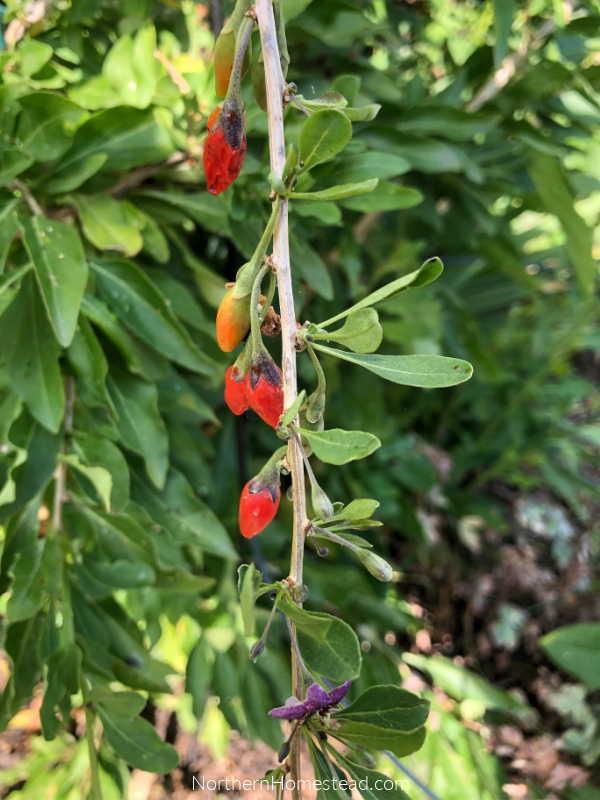 The plant is very showy, with purple flowers and bright red fruit. As you see in the picture, the flowers and fruit continue throughout the summer, making picking challenging. As you might already hear, I am not too impressed with that plant, even though it is undeniably beautiful.
The plant is very showy, with purple flowers and bright red fruit. As you see in the picture, the flowers and fruit continue throughout the summer, making picking challenging. As you might already hear, I am not too impressed with that plant, even though it is undeniably beautiful.
The taste is sweet but not yummy, in my opinion. The Cantonese add young leaves and shoots to stir-fries and berries to soups. I have yet to try that. I imagine it would be tasty to use them more as a vegetable than a berry. As a berry, we have been hiding them in smoothies.
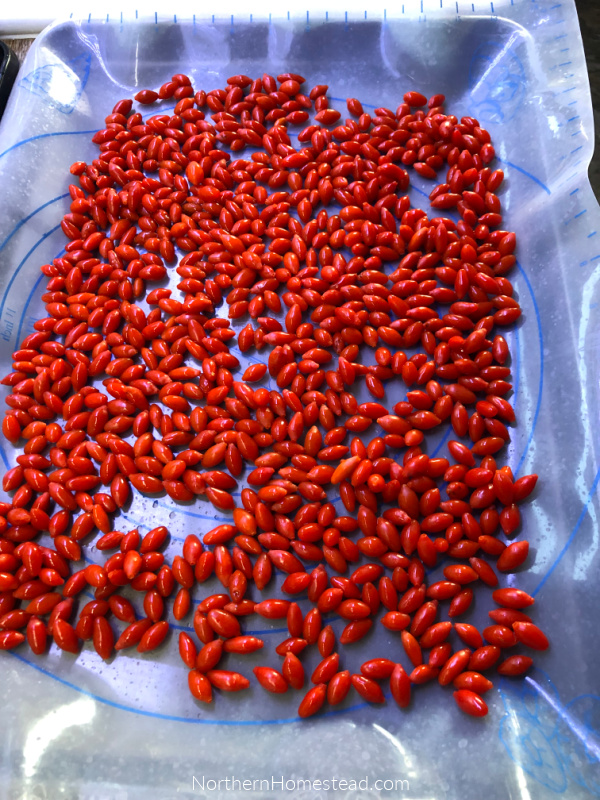 To preserve, they can be dehydrated or frozen. Dehydrated, they actually taste quite nice to snake on.
To preserve, they can be dehydrated or frozen. Dehydrated, they actually taste quite nice to snake on.
Because they are highly suckering and sensitive to frost, I would not recommend growing Goji berries in an urban cold-climate garden.
What is your take on growing Aronia and Goji Berries in an urban garden? Please share in a comment below.
We invite you to subscribe to Northern Homestead and follow us on Instagram, Facebook or Pinterest for the latest update.






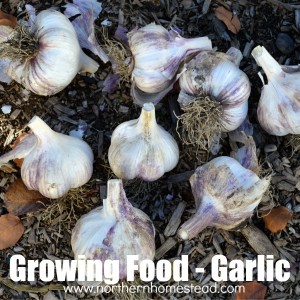





I am growing goji berries in zone 6b where we have snow but I have had no problem with frost damage. I agree harvesting is tricky because the berries ripen at different times on the same branch. They do produce suckers and the thorns are serious and not talked about much. I have dried them successfully and quite enjoy the tart flavor. I would probably move them where I don’t walk barefoot so much and where it can expand without problems.
Oh my, I even forgot about the thorns and the mess the berries make. Thank you for your comment and the reminder. Definitely something to keep in mind when planting goji berries.
I have the Aronia berry; only 2 of my 3 have survived & im moving them to a sunnier location this fall because they were barely surviving beneath my native Choke Cherry. No berries yet in zone 3, Rocky Mountain House. My 2 Goji berry trees didn’t survive but were put in a newly worked up garden in my front yard. I would like to try them again sometime.
Thanks for sharing your experience with them.
My Goji had a hard time to get started as well, now I wonder if I can ever get rid of them ;).
Thank you for sharing your experiences! I avoided goji because of the thorns, but it’s helpful to hear there may be other characteristics that would make it a harder plant to grow. I’m south of you in Alberta, zone 4, so would expect similar experiences.
I have been growing aronia for a couple of years now, but they are both dwarf plants, and I don’t see any berries yet. Maybe I will get a Viking! Good to know your source for the plants – I have planted hazelnuts from T&T that are doing very well, as I knew I had to have a tough plant. Lots of greenhouses around here source their plants from southern BC, and they just don’t grow well or survive the winter. But T&T plants are well suited for prairie survival!
For the most part I have had great experiences with T&t Seeds plants. I wish i had looked into their guarantee sooner though, a few that did not grow could have been replaced. It’s something to be aware of.
I do not have much of a garden–only some herbs in our apartment–but I do love snacking on dried gogi berries. They are also a very pleasant addition to tea.